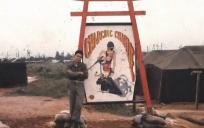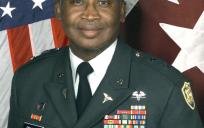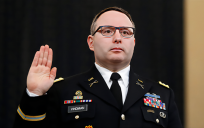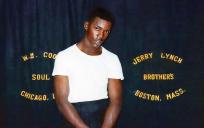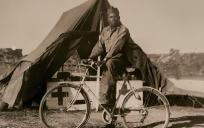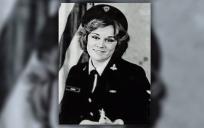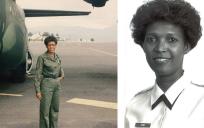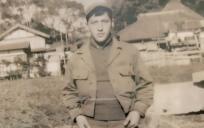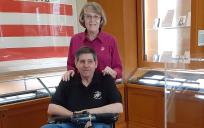Record date:
Samuel "Lee" Swain, Sergeant First Class
Imagine sitting a Bell UH-1 Iroquois "Huey" military helicopter in the middle of an assault mission in the Vietnam War. But instead of shooting bullets, your job is to shoot photographs. That was Samuel “Lee” Swain’s job when he served as a US Army photographer.
From 1968 to 1970, Swain served in the Department of the Army Special Photographic Office (DASPO), which was activated by President John F. Kennedy in 1962 to gather visual documentation of military operations for the US government. Originally, Swain enlisted in the US Air Force, where he was trained as a photographer, in 1951. He served in the Korean War but left the Air Force after four years of duty. He attempted to go to college but dropped out because he was “sitting in class watching the birds. I needed to get outside,” he recalled.
In 1958, Swain went back to military service and enlisted in the Army. Swain trained in motion pictures at Fort Monmouth, New Jersey, after which, he reported to DASPO at Fort Shafter in Honolulu, Hawaii, where he covered visits of President Lyndon B. Johnson four times. During this time, Swain married his wife, Ann, in 1965 and had two children.
After Fort Shafter, Swain was sent on assignments in various locations, including the making of motion pictures for the Republic of Vietnam National Police, the Thai Army, the Korean Army, and the 173rd Airborne Brigade. He also went on several helicopter operations and assault missions in Vietnam. But Swain’s most significant assignment was gathering footage of the Tet Offensive, where he shot film at three different embassies.
Swain looked back fondly on his time as a photographer for the Army and Air Force and hoped people appreciate the sacrifices he and other DASPO servicemen made in order to capture images of these important events.
After retiring from the military in 1981, Swain continued to do contract work for the government and served as a chaplain and commander of the Veterans of Foreign Wars Post 76. Flashes of his work can be viewed in “Faces of War: Documenting the Vietnam War from the Front Lines,” a collection of photographs and motion pictures by DASPO that provide a unique perspective of the second longest American war. Swain passed away on September 30th, 2017.
